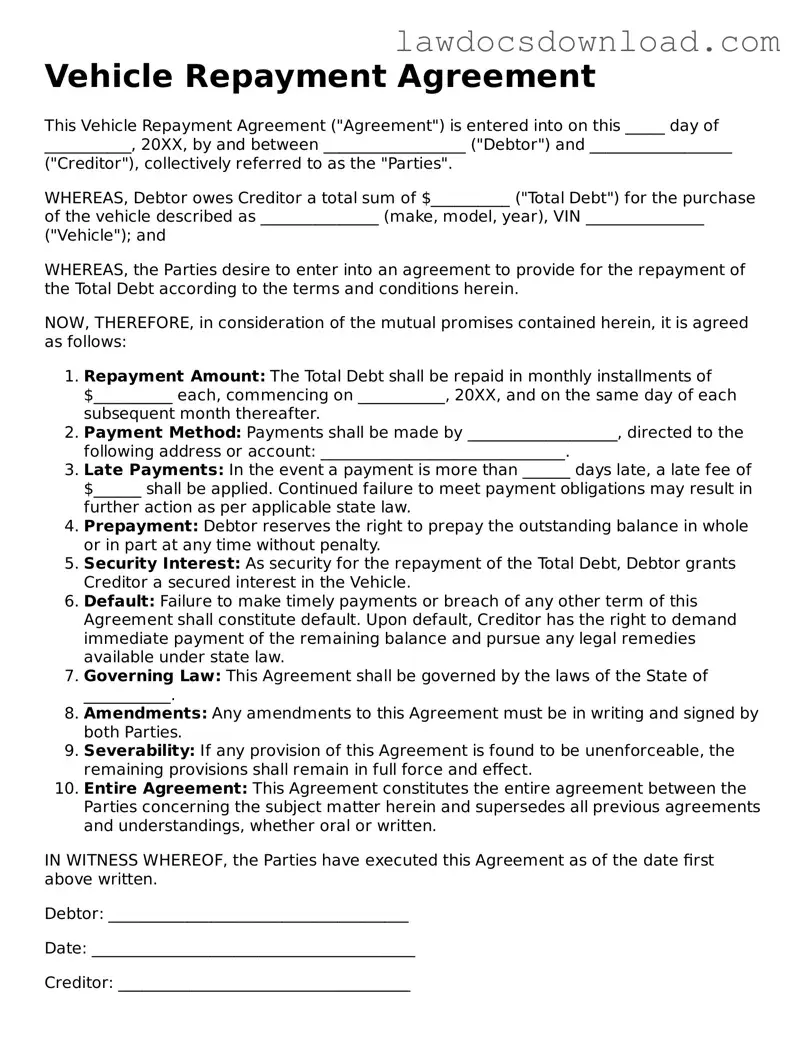Vehicle Repayment Agreement
This Vehicle Repayment Agreement ("Agreement") is entered into on this _____ day of ___________, 20XX, by and between __________________ ("Debtor") and __________________ ("Creditor"), collectively referred to as the "Parties".
WHEREAS, Debtor owes Creditor a total sum of $__________ ("Total Debt") for the purchase of the vehicle described as _______________ (make, model, year), VIN _______________ ("Vehicle"); and
WHEREAS, the Parties desire to enter into an agreement to provide for the repayment of the Total Debt according to the terms and conditions herein.
NOW, THEREFORE, in consideration of the mutual promises contained herein, it is agreed as follows:
- Repayment Amount: The Total Debt shall be repaid in monthly installments of $__________ each, commencing on ___________, 20XX, and on the same day of each subsequent month thereafter.
- Payment Method: Payments shall be made by ___________________, directed to the following address or account: _______________________________.
- Late Payments: In the event a payment is more than ______ days late, a late fee of $______ shall be applied. Continued failure to meet payment obligations may result in further action as per applicable state law.
- Prepayment: Debtor reserves the right to prepay the outstanding balance in whole or in part at any time without penalty.
- Security Interest: As security for the repayment of the Total Debt, Debtor grants Creditor a secured interest in the Vehicle.
- Default: Failure to make timely payments or breach of any other term of this Agreement shall constitute default. Upon default, Creditor has the right to demand immediate payment of the remaining balance and pursue any legal remedies available under state law.
- Governing Law: This Agreement shall be governed by the laws of the State of ___________.
- Amendments: Any amendments to this Agreement must be in writing and signed by both Parties.
- Severability: If any provision of this Agreement is found to be unenforceable, the remaining provisions shall remain in full force and effect.
- Entire Agreement: This Agreement constitutes the entire agreement between the Parties concerning the subject matter herein and supersedes all previous agreements and understandings, whether oral or written.
IN WITNESS WHEREOF, the Parties have executed this Agreement as of the date first above written.
Debtor: ______________________________________
Date: _________________________________________
Creditor: _____________________________________
Date: _________________________________________
